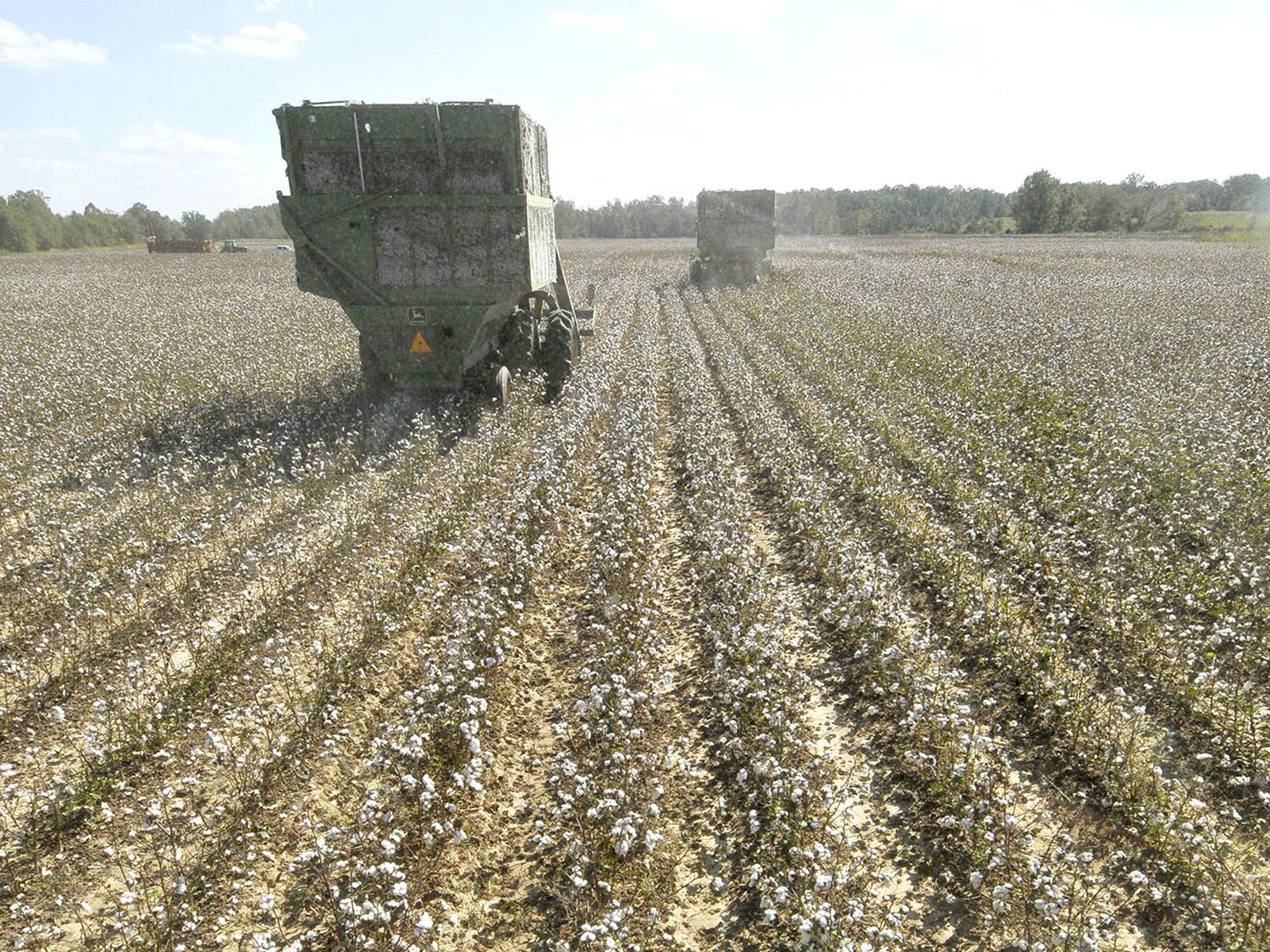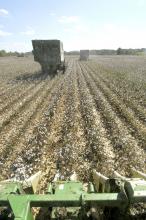Information Possibly Outdated
The information presented on this page was originally released on October 12, 2012. It may not be outdated, but please search our site for more current information. If you plan to quote or reference this information in a publication, please check with the Extension specialist or author before proceeding.
Early data indicates great cotton harvest
MISSISSIPPI STATE – Early October rains that could have devastated the state’s cotton crop seem only to have delayed harvest of what should be near-record yields.
The U.S. Department of Agriculture estimated the cotton harvest was a little behind schedule, with just 33 percent of the fields harvested by Oct. 7. However, they rate 67 percent of the crop in good or excellent condition and another 24 percent fair.
USDA estimates Mississippi’s cotton yield at 1,012 pounds per acre, which is 12 pounds shy of the record set in 2004. The state’s average yield is about 950 pounds an acre. A bale weighs 480 pounds.
Darrin Dodds, cotton specialist with the Mississippi State University Extension Service, was hesitant to predict a new state record, but said yields are high.
“Everybody is picking a lot better crop than they thought they would,” Dodds said. “I’ve seen yields in excess of 1,500 pounds per acre.”
Cotton harvest began in late September, but a heavy rain on the last weekend of the month kept growers out of the fields for more than a week. Dodds said the rain slowed harvest considerably, but appears to have caused only minimal losses.
“We got a lot of rain, but not a lot of hard rain that would drive cotton to the ground,” he said. “There has been some concern for quality, but so far, rain seems to have mainly been a big inconvenience.”
Jerry Singleton, Extension agronomic crops agent working in the Leflore County area, said growers were back in the field the second week of October.
“The lint dried quickly, but the soil was too wet to support equipment,” Singleton said.
He said growers are pleased with the early results.
“It looks like a 2.5 bale average will be typical,” Singleton said. “The good Lord blessed us with some favorable weather this year from planting up to the big rains, and now we have decent weather again for harvest. We need another two weeks of beautiful harvest weather and we’ll be done.”
Mississippians are familiar with the rectangular modules that line cotton fields during harvest, but are spotting round, plastic-wrapped rolls or round modules in fields more frequently. Dodds said these round bales are produced by a new design of cotton picker that drastically reduces the pieces of equipment and laborers needed for harvest.
“It’s a much, much more efficient operation,” Dodds said. “Now you have one guy on a picker and one guy on a tractor moving the round bales. Before, you had someone on a picker, another couple on tractors pulling boll buggies and another in a module builder.
“You can harvest a lot of cotton with a lot less help than before,” he said.
The state had 460,000 acres of cotton this year, down from 580,000 in 2011 and more than a million acres in 2006. Prices of competing crops in comparison to cotton are largely to blame, with corn and soybeans being the biggest contenders for cotton acres.
John Michael Riley, Extension agricultural economist, said cotton prices became more competitive by rallying near 95 cents per pound.
“However, prices began to slide in May and have hovered between 70 and 80 cents per pound since July,” Riley said.







